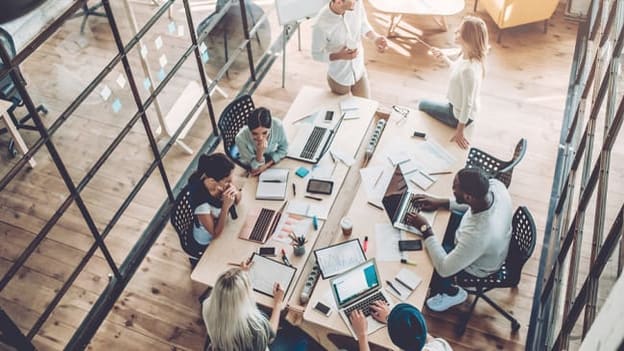COVID-19: What is the role of your workplace?

COVID-19-19 has changed our lives completely. As the offices are gradually opening, it has become important for companies to take the responsibilities of their employees’ well-being and safety. There are some major workplace trends that companies will witness across the globe.
In the near future, especially for larger companies and MNCs, offices will emerge as a destination for collaboration, integration and social interaction amongst people where trust and teamwork will see prominence. Offices will slowly emerge to be more of a perk than a necessity in several industries. In contrast, remote work will be the norm for focused, private and individual work. This requires offices to be replete with the necessary tools and amenities to facilitate the same. The more flexibility that is offered to employees in achieving this balance with the correct policies, the higher the productivity level and outcome will be. Being present in the office simply does not function as a parameter for measuring output anymore with density being a huge concern.
Workspaces will now be centered around people and their needs; their safety and well-being. Sick leave policies and personal needs will be brought more into the limelight. It will no longer be taken for granted that an infection passing through office is the norm. This precedent will change and HR will have a huge role to play in reevaluating policies and setting new measures and standards for evaluation and better health.
Seeing us we have entered an era of being an elastic digital workforce, with us being online and available all the time, our work day and its strict separation of hours from our personal lives may falter. People will need to learn to adapt and set boundaries so as not to burnout in working endless hours a day as opposed to a 9 to 5 shift. Fluidity will become the new norm and organizations will work better if they offer choice to employees and let them set their own balance of remote and office work which will lead to better productivity.
Traveling endlessly for work will see a reduction as people reevaluate when they really need to make that effort as opposed to when the work can be conducted virtually. Even documents can be signed online to curtail travel. A lot of these changes will depend on how readily we adopt the technology though the incentive is definitely much more than before COVID-19.
There will also be an increased use of temporary and part-time workers. With many being furloughed and firms deciding to invest more and more in their frontline employees itself whilst cutting down on unnecessary resources, many are being hired for or are securing part-time jobs or gigs for themselves. This also brings its own problems such as insecurity, lack of benefits and it remains to be seen how the future will play out for this gig economy of sorts.
It is important for organizations to have a people-centric approach going forward. Those organizations and leaders that invest in the well-being of their employees will see a better recovery and more returns in the long-term as employees perform better when reassured that their safety and best interests are at heart.
Workspaces in the future will be highly sanitized, have healthier air, more facilities for an employee and more breathing space for them as well whilst being multi-functional and containing open and closed spaces to cater to their needs. There are different types of personalities in the office be it extroverts, introverts or any other nuances and it is important for spaces to be versatile for people to work freely.
The way we work and workspaces themselves will never be the same again. While for some this shift will be more rapid than others, COVID-19 has simply been the driver or accelerating force behind the change that was already due to appear on the horizon in the next decade or more. The future of work will therefore look at achieving business continuity while aligning employee understanding and needs to the company vision and goals. It is important to recognize these lessons and tools for the future to push the barriers of innovation and adaptability as COVID-19 rewrites the future of work.
















